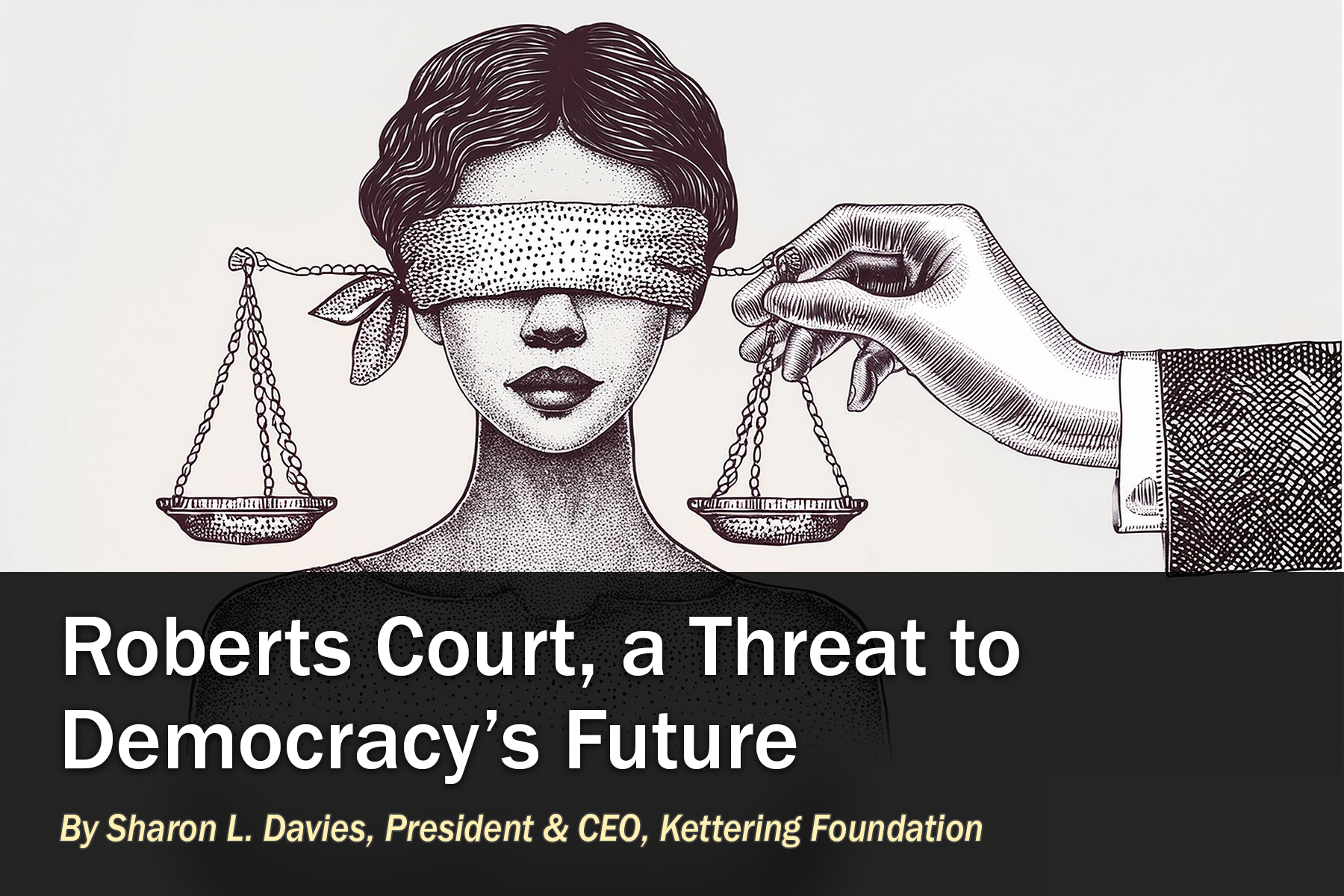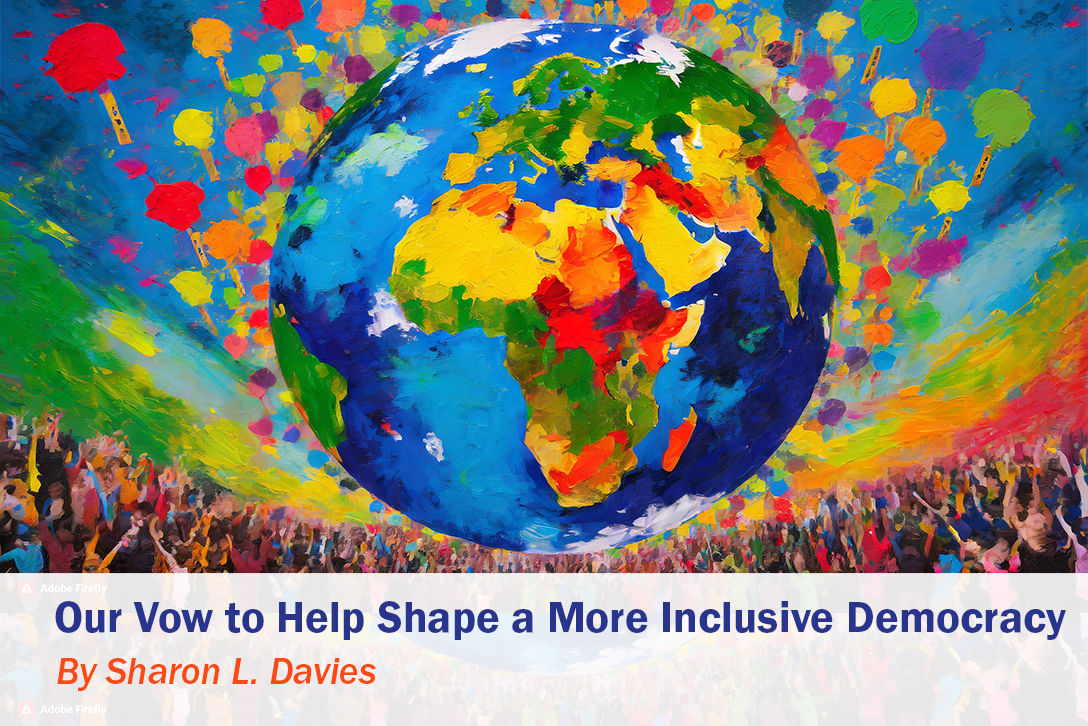Lessons for Journalists from Amanda Ripley’s Book, High Conflict: Part II

Earlier this year, journalist Amanda Ripley spoke to Kettering Foundation staff about her book High Conflict: Why We Get Trapped and How We Get Out. In this second in a series of two blog posts, Jennifer Brandel, who has collaborated with Kettering on journalism experiments in strengthening democracy, writes about the implications of the book’s insights for the media.
Amanda Ripley’s book High Conflict provides the following list of questions that reporters can ask to produce more complex, nuanced stories and reduce unproductive conflict:
1. What is oversimplified about this conflict?
2. What do you want to understand about the other side?
3. What do you want the other side to understand about you?
4. What would it feel like if you woke up and this problem was solved?
5. What’s the question nobody is asking?
6. What do you want to know about this controversy that you don’t already know?
7. Where do you feel torn?
8. Tell me more.
Adding these questions to interviews concerning any story with deep tension would not only change what’s being reported, but also create an opportunity within the people being interviewed to reflect more deeply, and potentially shift their mindsets and behaviors. A conversation that seeks to understand, rather than extract basic information, has the potential to create a real relationship. It can be transformational.
The magic ratio
Many newsrooms are coming to see that they have underserved, misreported on, and harmed communities that don’t hold traditional positions of power (e.g., communities of color, low socioeconomic status, undocumented, refugee, very young or very old, people with radical or fringe beliefs). Every newsroom is approaching this reckoning differently. Some are asking, “How do we get more diverse audiences?” to which I always ask, “What are you offering them of value that they have said they need?”
To answer that question, newsrooms need to establish authentic and thoughtful relationships with communities and individuals that they otherwise have not been in relationship with.
Ripley talks about a magic ratio in her book, which is “when the number of everyday positive interactions between people significantly outweighs the number of negative, creating a buffer that helps keep conflict healthy.” A great ratio to aim for is five positive interactions for every one negative.
If you concede that on some level the communities that newsrooms have underserved have conflict with that newsroom—or at least are not on good terms—then how might the services and staff of a newsroom better show up for those communities?
This could look so many ways: newsrooms tabling at a community fair and offering something of value, developing deeper relationships with community leaders, mentoring, and showing up for youth, collaborating with faith groups and local support organizations, and in general reporting on topics that highlight the full richness and beauty present in any given place or group. This would go a long way toward setting new dynamics in which newsrooms don’t just show up in a community when something terrible has happened.
Another practice that can help support a better magic ratio is reporting more solutions journalism: rigorously reporting on the people and methods that are showing promise to correct for problems that communities face. And newsrooms can focus on more follow-up reporting to share how an issue was resolved.
Yet being in healthy relationships with communities is not the priority newsrooms have traditionally set. They see their jobs as reporting facts, letting the public decide what to do and hold the powerful to account.
In order to make the suggested shifts in process and priorities, newsrooms would need to decide on what they believe their role to be, who they need to serve, and what outcomes they are looking to drive (e.g., “To what end?”).
Perhaps the most fundamental challenge in making shifts toward good conflict reporting practices is in the commercial business model that many newsrooms are built upon. For news outlets that rely on advertising reach for their main revenue stream, their incentive structures reward content and headlines that are dramatic, get people’s attention, stir emotion, and stoke conflict. The 24-hour broadcast cable news takes this approach to the extreme and perpetrates the type of content that creates high conflict states.
What could be possible when applying lessons from High Conflict to journalism?
Despite the many challenges that would need surmounting, I feel inspired by the potential futures that shifting toward nuance, community relationships-strengthening, and adjusting business models can create. Below are a few examples I’ve dreamed about since reading Ripley’s book and dwelling in the possibilities.
Every newsroom has a dispute resolution center
What if newsrooms were able to create a neutral third-party space in which the people in conflict at the center of their stories had a process by which they could seek remedy and repair? Not only would this make a newsroom a more trusted and critical piece of civic infrastructure, but also would yield excellent follow-up reporting opportunities that showed how high conflict can become healthy again. In a related question, What would change if every reporter were trained in conflict mediation?
The “how I changed my mind” beat
What if every newsroom had a beat devoted to people who used to think X, but now thought Y, and showed people how it’s possible to change? Such stories would give people permission to start to lessen their grip on entrenched beliefs, and it would become acceptable to not hold a strong opinion. Stories with this arc can help people become more comfortable with nuance and more complicated narratives. There’s a growing field of study around this concept of “intellectual humility” that shows tremendous benefits.
Newsroom fines for exacerbating conflict
This is admittedly far more stick than carrot: What would a world look like with an independent judicial process that could fine a newsroom for stoking or exacerbating conflict? In this current context of limiting press freedoms for other reasons, this is likely a terrible idea that should not and could not exist. But it’s a thought experiment worth pondering. Many industries have independent bodies to regulate their effect on society or the environment. What would it look like for newsrooms to have some accountability like that, too?
Pulitzer-level prizes for stories that help resolve conflict
Rather than (or in addition to) the “stick” approach above, there could also be a “carrot” approach in which newsrooms and journalists are lauded and publicly recognized for their work in helping conflict to progress from being high conflict to healthy conflict, or even resolution. This might motivate some outside journalism to consider a job in the field.
Changing elections coverage: decency ratings for politicians
Rather than newsrooms using the horse race, competitive lens for elections, what if newsrooms prioritized a “citizens agenda” approach? This would allow the public to ask questions and suggest qualities they would like to see in candidates. Could newsrooms create a decency rating (alongside other dimensions) based on some publicly agreed-upon criteria, and give politicians a score and add those alongside their voter guides? Could this help newsrooms tip the balance of who runs and wins for office?
Radical collaborations between newsrooms at various ends of the spectrum
Could newsrooms that lean more progressive or conservative collaborate on coverage to highlight the areas in which they agree, or in which conversation is needed? It would be very exciting to see a pair like Mother Jones and The Bulwark tackling an issue from places of collective possibility. Radical collaborations, when well-facilitated, could help staff at seemingly opposing newsrooms to soften their stances, be more willing to hear one another’s ideas, and collaborate.
Reporter mission statements . . . and mission questions
Some newsrooms, like KPCC, are creating reporter mission statements so that curious news consumers can better understand goals for their work. I’d love to also see their mission questions: What curiosity is motivating their work and what life experiences have contributed to pursuing answers and solutions?
If you or your newsroom would be interested in experimenting with these concepts, reach out and let’s collaborate!
Jennifer Brandel is cofounder and CEO of Hearken, a company that helps organizations around the world develop and operationalize participatory processes. Hearken took home the prize for Best Bootstrap Company at SXSW in 2016 and won the News Media Alliance Accelerator Pitch Program in 2017. Brandel is a recipient of the Media Changemaker Prize by the Center for Collaborative Journalism, and in 2018 was named one of 30 World-Changing Women in Conscious Business. Brandel has served as a Sulzberger Fellow at Columbia Journalism School and as an RSA Fellow in London. She is also a member of the Guild of Future Architects and National Civic Collaboratory. Brandel led the creation, fundraising efforts, and execution of Election SOS, an ongoing collaborative initiative to support journalists’ critical information needs around the 2020 US elections. In 2022, she cocreated Democracy SOS with the Solutions Journalism Network and Trusting News to support newsrooms making long-term culture shifts in political coverage. Brandel founded and led the groundbreaking audience-first journalism series Curious City at WBEZ Chicago. She is cofounder of Zebras Unite, a global movement and network of entrepreneurs, funders, investors, and allies creating a more ethical, inclusive, and collaborative ecosystem for mission-based startups. She also cofounded Civic Exchange Chicago, which brings together civic startups in a collaborative learning community.







